Swedish spear
In this article we will not delve into aviation history as a whole, we will tell only about the creation of one aircraft, which for more than two decades was the basis of the front aviation of Sweden. This is the SAAB 32 "Lansen" (Spear - Swede.) - attack aircraft, fighter, reconnaissance aircraft, electronic warfare aircraft, target towing vehicle, air target simulator, platform for developing promising systems.
The development of a jet strike aircraft to replace the SAAB B-18, SAAB J-21 and J-30 piston bomber (De Havilland Mosquito) began in the year 1946. The original project, which had the working designation "Р1100", was supposed to be equipped with two TRDs of English production, as well as equipped with an internal bomb bay, which could accommodate two 500 bombs kg or up to 12 NAR caliber 150 - 180 mm. At the design stage, many aerodynamic configurations were considered, and one of the most promising was considered to be a flying wing design.
However, given the not quite successful world experience of implementing such a layout in those years, the Swedish designers abandoned it in favor of the traditional classical scheme. The power plant was “trimmed” to one engine placed in the fuselage.
As a result, in 1948, the P1150 project appeared, which became the prototype of the serial machine. At the same time, the Royal Air Force specified tactical and technical requirements for a promising attack aircraft, which, by the way, were quite stringent. It was asked that the new aircraft was double, it should be ready for round-the-clock use in all weather conditions, have powerful strike weapons (cannons, bombs, NAR and guided missiles), integrated electronics and weapon control system. And most importantly - within an hour from the center of the country, the bomber must be able to reach any point on the coast of Sweden, having a length of more than 1245 nautical miles (~ 2000 km).
Actually "Lansen" began to be developed in December 1948, already as a project "type 32". In parallel, work was underway on the single-seat version, which was to be used as a daytime interceptor fighter. In comparison with the prototype, the project has undergone minor changes, in particular, the horizontal tail has been moved from the keel to the fuselage. For the first time in their practice, the Swedish designers used mathematical methods for modeling the structure, which was calculated for a range of operating overloads from + 8 to -3 units (the breaking overload was in the range from + 12 to -8 units). The aircraft was designed to fly at transonic speeds, on the basis of this, its aerodynamics was also formed.
The wing of the aircraft was equipped with automatic slats (they were later abandoned), ailerons and Frauler’s significant flaps. The tests of the full-scale wing layout (on the scale of 1: 2), as in the case of the development of the previous fighter company - SAAB 29 Tunnan, were carried out at a flying laboratory, the role of which was performed by a lightweight single-engine SAAB-91 Safir. After modifications to the carrier, wing tests began in March 1950.
The main obstacle in the promotion of the project was his power plant. By the way, this situation in the aircraft industry, rather the rule than the exception, and the Swedish designers in this regard are not alone. Initially it was assumed that the “type 32” would be equipped with the engine of the Swedish design Dovern (RM 4) manufactured by STAL with a load of 3300 kg. Delays in engine development made it necessary to decide on installing Avon's English Avon 100 TRD series aircraft, which in the RA7R version with an afterburner camera was built under license in Sweden under the designation RM5А2 (the afterburner was designed by Swedish engineers). In addition, the English copy developed the 4500 kg of afterburner, which was significantly more than the Swedish Doverna had assumed.
For the aircraft, a new ejection seat, the SAAB Type 3, was developed, equipped with a two-stage powder charge. The minimum safe height of the aircraft leaving was approximately 50 meters. The chair was installed on an aircraft on separate rails (a similar solution was used on products of the Martin – Baker company) and had a system that improves the smoothness of the moving of the chair during the ejection. The parachute canopy had a special shape, and the emergency reserve was first packed into a rigid case in order to reduce the load on the pilot's spine at the time of the ejection. The chair was operated in two ways: pulling out the carving pads located between the pilot's knees, or by closing the face shield.
The first flight of the prototype took place in the 1952 year. I do not call the exact date, because, unfortunately, I did not attend this event, and the sources I studied call two “exact dates” - September and November 3. Moreover, the proportion between the dates in the sources is exactly 50 on 50. In one, the chroniclers are united - the plane was piloted by the company's chief pilot, test pilot Bent Olafo (Bengt Olow).
The flight was successful, followed by tests. October 25 1953, the plane in a gentle dive broke the sound barrier. Soon all the four experimental machines connected to the tests, in parallel the preparation of mass production was going on, construction plans were determined. It was supposed to build a car in three basic versions: a shock, an all-weather interceptor fighter and a naval reconnaissance aircraft. Training option was not provided initially. At the same time, the design provided for the possibility of installing controls and some backup devices in the second cockpit, so that the need for a “split” was no longer necessary.
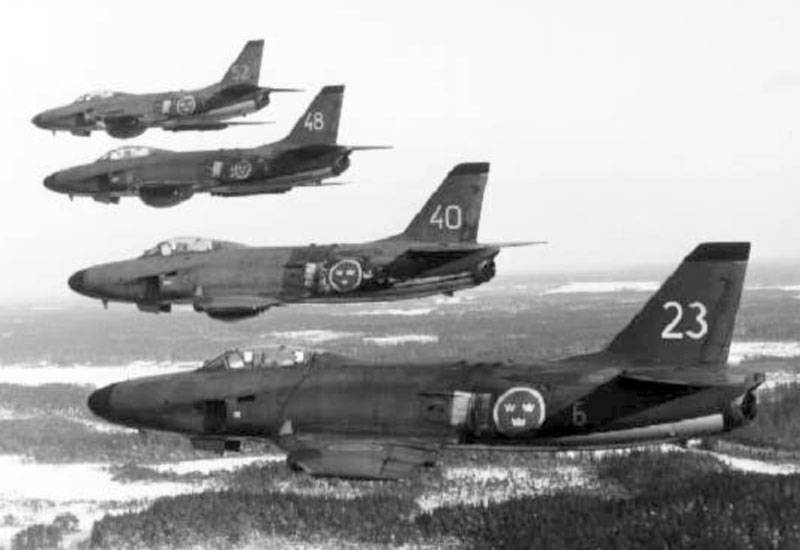
In 1955, the first serial A-32A Lansen entered service with the Royal Swedish Air Force, thereby initiating the re-arming of shock squadrons on jet technology. The strike version of the aircraft was at that time a rather formidable weapon. Four 20-mm Bofors M-49 cannons with 180 ammunition per barrel were located in the forward fuselage. At the same time, combat charging, as a rule, was limited to 80 projectiles per barrel. In flight, the barrels were closed with special flaps, which were opened by electric drives just before shooting.
Gilzosbornikov guns did not have, so the engine air intakes were protected with special ridges on both sides of the fuselage, and the outboard fuel tank had an isoprene cover in front of it. By the way, on the interceptor gilzsborniki already used.
In addition to guns, the pilot "Lansen" also had an impressive arsenal of bomb and missile weapons. Bomb weapons included 4 bomb caliber 250 kg or a pair of 500-kg bombs. Twelve nodes of the external suspension could be located up to 24 NAR gauges from 120 to 240 mm, or 2 solid fuel robot Robot 304 (later designation - Rb 04), the main purpose of which should have become Soviet ships. In general, UR Rb 04 deserves a separate article, since This is one of the first rockets in the world to have transonic speeds and an active homing head. On it, Swedish designers are still in the middle of 50's. implemented the principle of “shot and forget”, which is so popular nowadays. Of course, the firstborn had many flaws (limited launch range - 10-20 km, poor noise immunity, instability of work on the water surface), but the engineers who created such weapons in those years deserve all respect.
It is noteworthy that the A-32A was supposed to be the carrier of nuclear and chemical ammunition, since in 50 - 60 in Sweden, there were active developments in these areas.
The electronic equipment of the attack aircraft included the PS-431 / A radar, designed by the French company CSF as applied to Swedish requirements. In 1953-54 17 sets of stations were delivered to Sweden, but they were not installed on airplanes, but were used to study the design, training of specialists and other purposes. Lancen was staffed with Swedish-made radars produced under French license by several Swedish enterprises in cooperation.
Based on the tactics of using strike groups, as well as to save money, only about a quarter of А32 aircraft were equipped with radars. For the same reasons, about the same machines were equipped with navigation equipment. Airplanes equipped in this way, in addition to percussion tasks, carried out the tasks of target designation, group control, and flight navigation support.
The attack aircraft was equipped with means of controlling the use of weapons (a camera of the sight screen, a photokin-gun), a radio altimeter of small (0 - 200 m) heights, and radio communication equipment. As a means of electronic warfare used hanging container BOZ-3 with a spreader dipole reflectors.
In 1955-1958 287 strike aircraft were delivered to the Royal Swedish Air Force (32001-32287 serial numbers, including three prototypes brought to the serial standard) with which no less than 12 aircraft squadrons were equipped with 4 wings (F6, F7, F14 and M17). In the battle formation, the new machines replaced not only piston SAAB-18, but also jet De Havilland Vampire and SAAB 29 Tunnan.
The next variant of the "Lansen" was the all-weather interceptor J-32B, which made the first flight of 7 in January of 1957. Compared with the shock version, this version had a number of significant differences. First, the aircraft was equipped with a more powerful RM6B engine, which was a licensed copy of the Avon 200 series. The afterburner, as in the previous case, was designed by Swedish engineers. The new engine in the afterburner was 6900 kg. The new power plant entailed the processing of air intakes for more air flow, as well as a jet nozzle.
Secondly, instead of the Bofors M-49 cannons, the British 30-mm cannon Aden revolver type with 90 ammunition on the barrel was mounted on the fighter. To reduce the weight of the structure, the protective flaps were abandoned, and the spent cartridges were assembled in the sleeve case. The composition of outboard weapons has also changed. The number of external suspension nodes has been reduced to four. The Rb-324 air-to-air guided missiles, which are a licensed copy of the American SD AIM-9 Sidedinder, were included in the weapons nomenclature. The fighter had two main weapons: the 4 SD Rb-324, or two such missiles plus two containers with 75-mm HAP.
Thirdly, based on the main tasks of the interceptor, its onboard REO has undergone significant changes. The plane was installed three-axis radar PS-42 / A, which was a further development of the station PS-431 / A, which carried out the Swedish company Ericsson. PS-42 / A had a tracking zone in azimuth ± 60˚, and in elevation from + 60˚ to -30˚, the target range was about 30 km.
In addition to the new radar, the fighter was equipped with such an innovation as the Sikte 6A computer-based weapon control system. Some interceptors were also equipped with Hughes' AN / AAR-4 infrared station, mounted under the left wing directly in front of the landing gear. The weapons control system displayed information about targets from the radar and the infrared station, as well as navigation information on a monitor screen in the cockpit of the pilot and the operator. Thanks to modern avionics, the aircraft could attack the target without making visual contact with it.
The Royal Swedish Air Force ordered 120 interceptors, and from 1958 to 1960, 7 squadrons were equipped with this technique (118 machines, 32501-32620 serial numbers). An interesting fact: with the advent of the Swedish Air Force supersonic fighters "Draken" at the end of the 50-s, the "Lansen" continued to remain in service even before the 1973. Obviously, the reason is the maneuverability of these aircraft. For all its merits, the Draken could not conduct a maneuverable air battle. Lancen, voluntarily or unwittingly, was optimized for this.
The latest modification, produced in series, was the photo reconnaissance and patrol aircraft SAAB S 32C. Structurally, it was not much different from the shock version. The greatest changes affected the nose of the fuselage, in which photographic equipment was installed instead of gun armament.
The first flight of the “Lansen” version was 26 March 1957 of the year. In the period 1958-1959. 44 machines of this modification were released. All scouts were part of the only reconnaissance air wing F11, based in Nykoping. Several S 32Cs in 1959-1961's. deployed as part of the most northern air wing of the Air Force F 21, based in Kallah. During operation, the total flight time of the S32C was more than 75600 flight hours. In service, they stood up to the 1978 of the year, until they were replaced by the photo-reconnaissance version of the "Wiggen" SH37.
The scout received an improved radar PS-432 / A, which had an increased target detection range (up to 100 km ahead and up to 50 km - on the sides). The station was optimized for searching and detecting surface targets, and for analyzing the results of reconnaissance using radar its screen was photographed with a special camera.
Up to six cameras for various purposes could be placed in the photo equipment compartment, although in operation their number did not exceed four. Initially, the standard equipment of the photo-compartment included two SKA.-17 cameras for shooting at low altitudes (focal length 130 mm) and as many cameras for high-altitude photography SKA.-18 (focal length 920 mm). Both cameras were of English production (AGI of Croydon). The first pair of cameras was photographed at altitudes from 100 to 1200 m, the second - from 3 to 10 km.
But this version of the scout was built only in a single version of the prototype. He did not satisfy the military, so the production aircraft had a completely different composition of photographic equipment.
By 1962, the reconnaissance aircraft were equipped with an improved photo equipment compartment. To accommodate new cameras, we had to slightly modify the design and increase the volume of the photo compartment. Two high-altitude cameras SKA.-23 (in the original - Fairchild K-47 manufactured in the USA, focal length 600 mm) optimized for night photography, as well as wide-angle camera SKA.-15 (Williamson F-49 Mk.2) were installed in the compartment. Both types were intended for high-altitude photography at night from heights above 1000. SKA.-23 were equipped with a stabilization system. The Yugner FL-S.2 camera, mounted behind the left SKA.-23, was also intended for shooting from high altitudes.
For low-altitude photography, a different set of equipment was used, which included two or three SKA.-16 cameras (manufactured by Vinten) with a focal length 100 mm and a motion compensation system.
Up to twelve 75-kg lighting bombs, suspended from external suspension nodes, were used to illuminate objects. The reconnaissance aircraft could also be equipped with a BOZ-3 dipole reflector emission device.
Developed several more modifications of the aircraft. This is a single-seater fighter J 32AD, which had no radar and armed with five guns: four 20-mm and one - 30 caliber mm. Work on this version did not go further development. The Swedish government has decided to purchase Hunter fighter jets in the UK, which served in the Swedish Air Force under the designation J120.
An improved version of the interceptor - J32U - was also developed with a more powerful Rolls Royce RA 19R engine. A new, thinner (on 6%) wing with 40˚ swept and tail unit was designed, which would allow flying at supersonic speeds. The installation of a rocket booster was also planned.
But this option is not out of the design stage. In 1958, the final decision was made to replace the Lancen after eight years with the new Viggen aircraft. True, the technical difficulties encountered in creating a new car did not exclude other scenarios. The question of the purchase of foreign equipment was seriously considered, the potential candidates included A-4 Skyhawk, A-7 Corsair, F-104 Starfighter, F-5 Freed Fighter, F-4 Phantom and Bekanir ". All applicants, except for the last two, were excluded from the list as not meeting the entire list of requirements. The “Phantom” turned out to be very expensive, with this money it was possible to build more than two hundred modernized “Lansen”. Yes, and the new "Wiggen" on the criterion of "cost-effectiveness" should have surpassed both the "Phantom" and "Bekanir." Therefore, as an intermediate solution in 1965, the option of refining interceptors J-32B into the shock version A-32B was considered, which had a reinforced design, a more powerful RM-6C engine and an armament complex developed for Viggen. Deliveries of such an option could begin as early as 1972, but the Viggen “ripened” on time: the first strike aircraft was delivered by the Swedish Air Force 21 June 1971.
During serial production, a total of 456 aircraft were produced in three basic versions. The fighters-interceptors left the line first, in the 1973 year they were replaced by the "Wiggens". Five years later, bombers and scouts.
But "Lancen" served his country for another twenty years, although in other guises.
In the 1972 year, six interceptors were upgraded to the J 32D target towing towers, which were operated up to the 1997 year. Even 15 machines, starting with the 1972 year, converted into EW J 32E aircraft. In the nose of the former fighter instead of the radar installed complex G24, designed for jamming ground and ship radar. There were three different station variants in the waveband (L, S, or C frequencies). On the underwing pylons housed the “Adrian” jamming containers (frequencies S or C) and the jamming container against the Petrus radar (frequency X), as well as two containers with dipole reflectors BOZ-3. The aircraft were used before 1997, including for the training of personnel of the Swedish armed forces.
Three J 32B were equipped with dual controls and were used as training aircraft, as well as for collecting samples of precipitation, for which they had three special containers with paper filters. After the flight, the filters were removed from the containers for further analysis. Interestingly, the two aircraft are still used in the interests of the radiation safety department of Sweden to collect air samples at high altitudes.
Some aircraft have long been used as flying laboratories in the development of new aircraft. For example, on A-32A (serial number 32080) in 1962-1963. they tested a new ejection seat designed for the SAAB-35 “Draken”, and later this machine became a flying stand for testing many of the new “Viggen” systems.
"Lancen" was not exported and did not participate in armed conflicts, although this opportunity once presented itself. In 1955, the Israeli government, after unsuccessful attempts to purchase the American Saber, appealed to the Swedish government to purchase SAAB 32 to counter the Egyptian MiG-15 and MiG-17, but was refused.
Nevertheless, the Swedish "Spears" still got abroad, but already as museum exhibits. The United States Airpower Museum acquired three Lancens, and it was reported that it was planned to bring one of them into flying condition in 2003. In 1986, the Swedes traded one of their planes for another rarity, the Dove De Havilland, in the UK the car received a registration and its registration mark G-BMSG. The rest of the airframe's resource before the sale was 1 an hour of 39 minutes, and almost all of it was spent during the flight to England. Another car in November 1999 flew to Spain, where it is now on display at the Museum of the Spanish Air Force in Madrid. And, of course, in Sweden itself “Lansen” is one of the main exhibits of several aviation museums, it can also be seen on pedestals at the entrance to educational institutions and air force units, or even just near motorways. And who knows how many Swedish boys, looking at such monuments of their own history, have fired up the dream of becoming a pilot, air traffic controller, aviation engineer or mechanic?
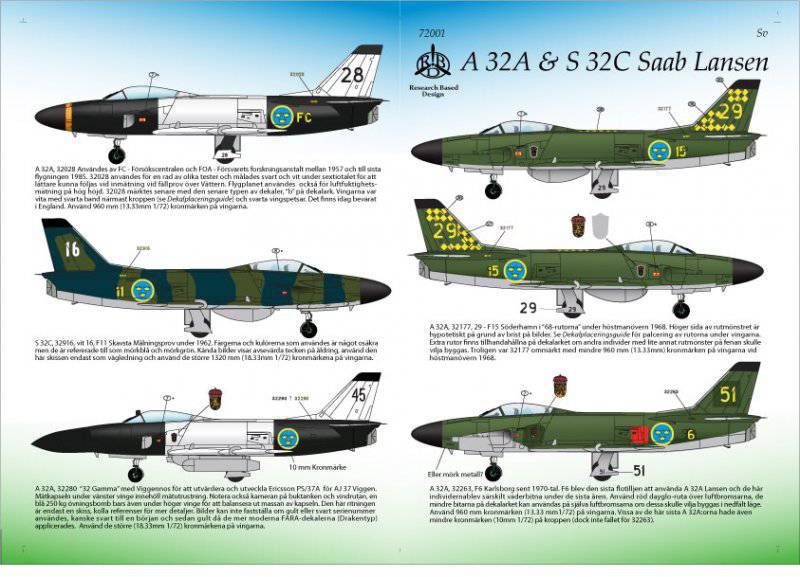
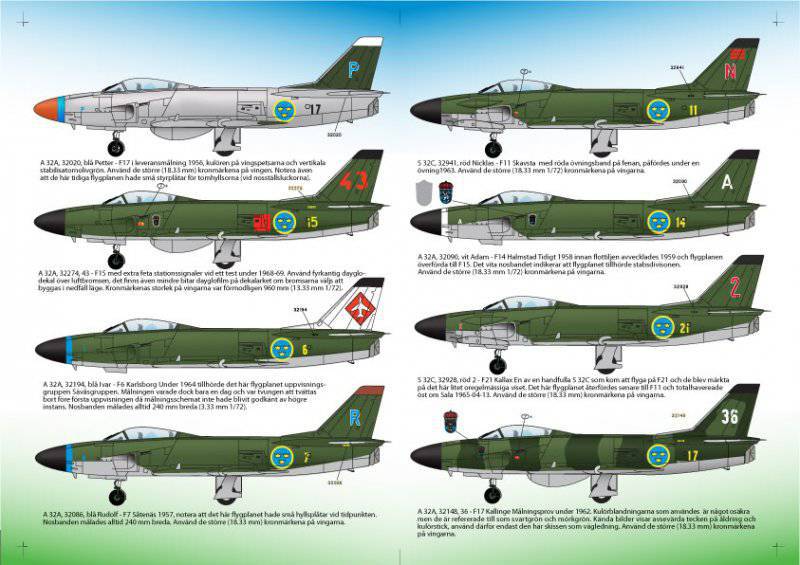
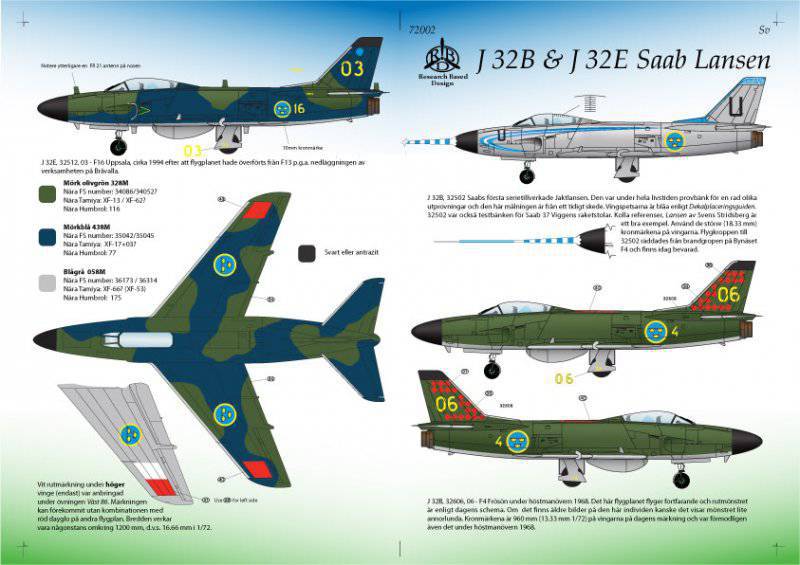
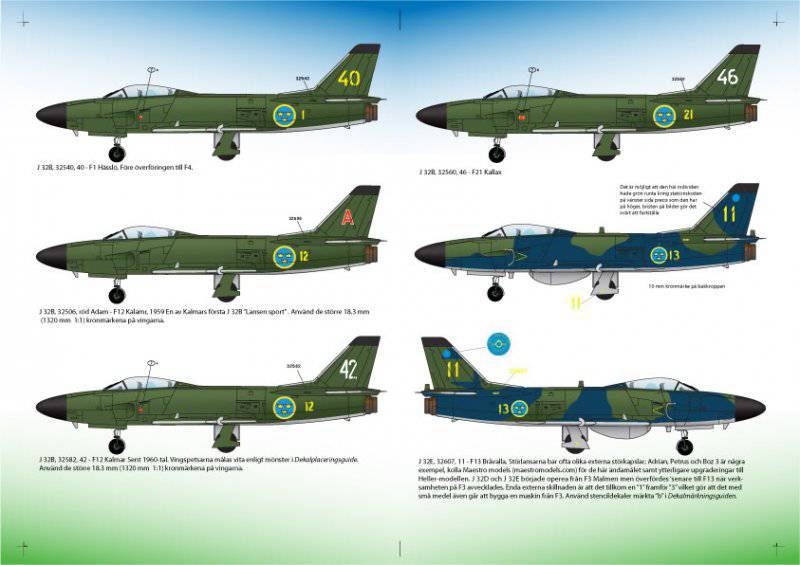
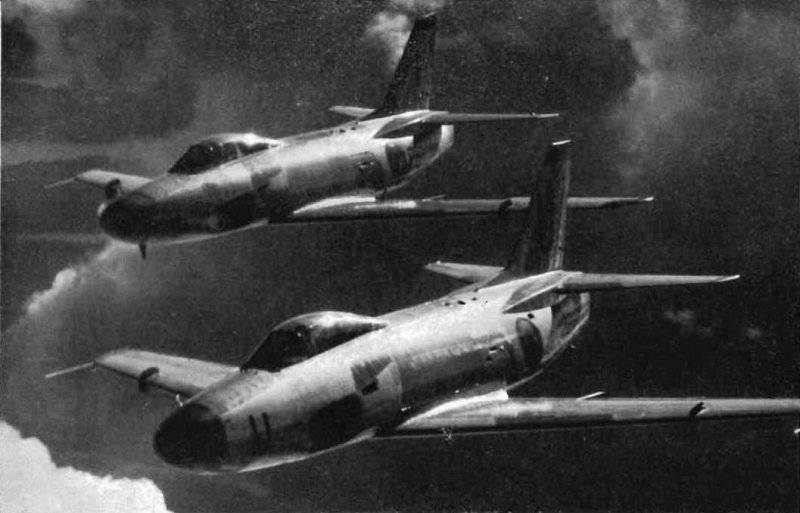
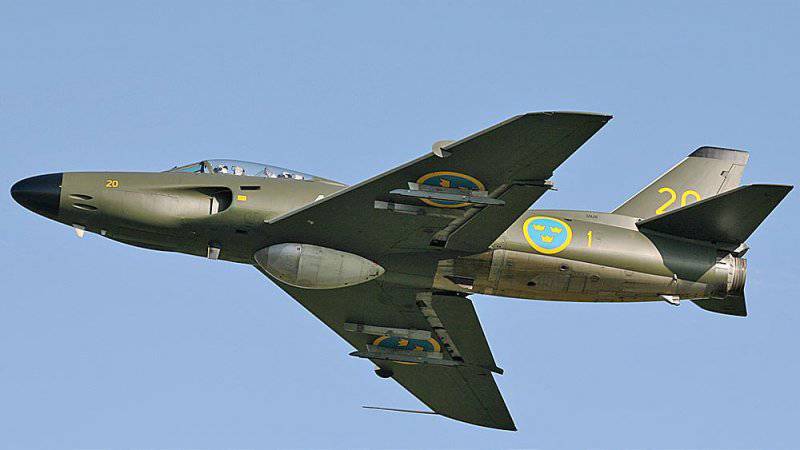
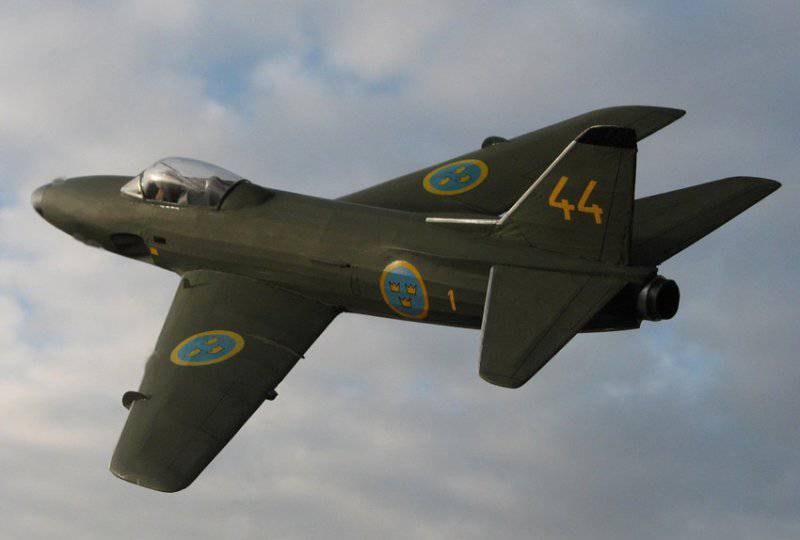
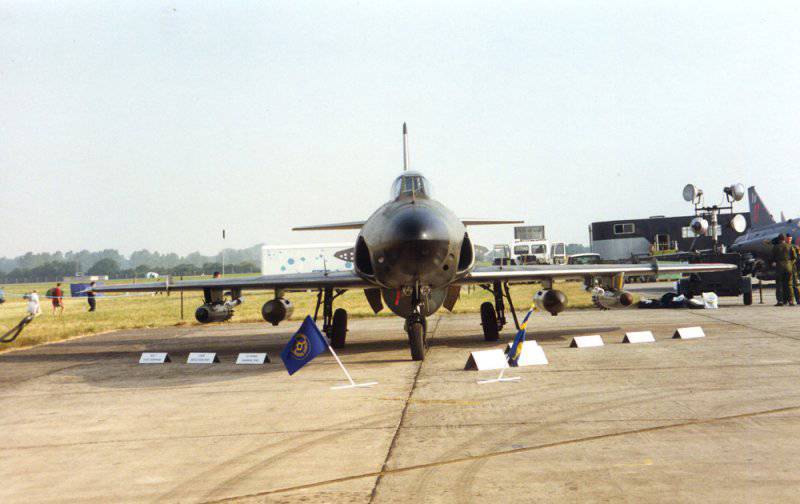
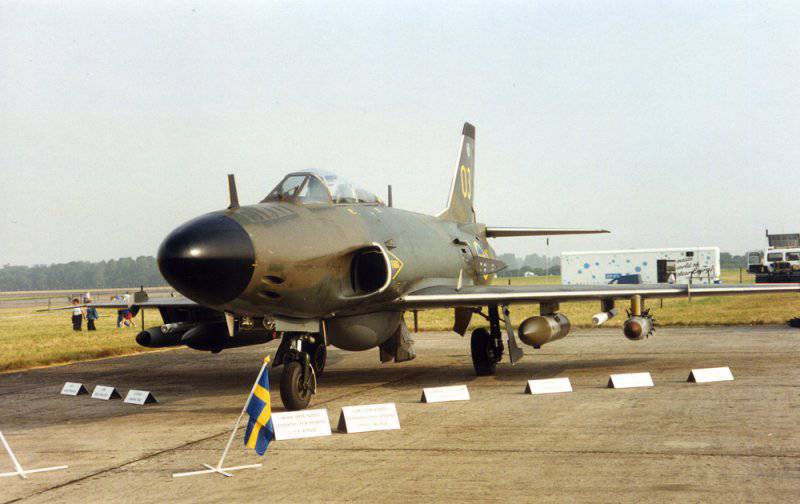
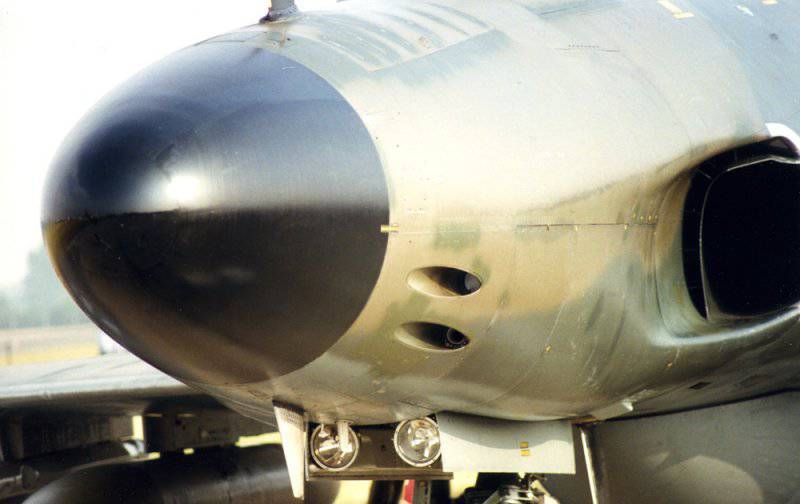
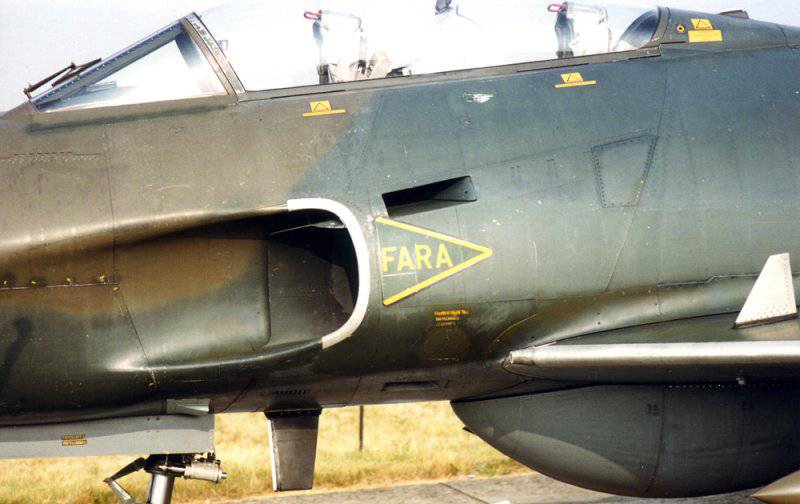
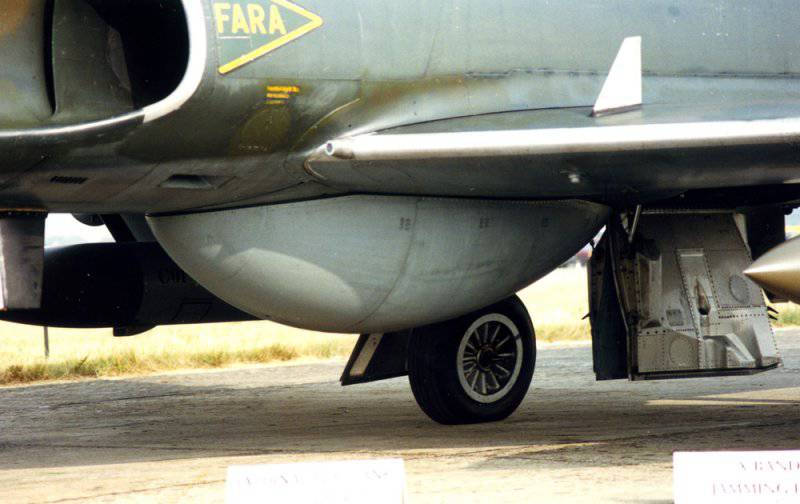
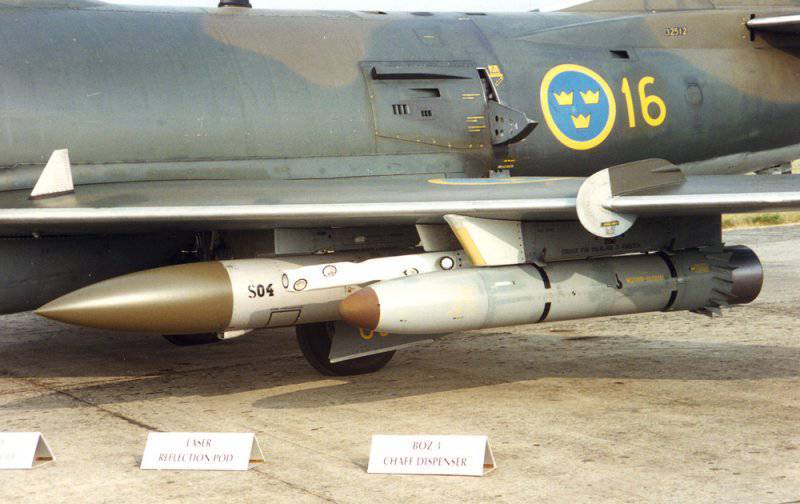
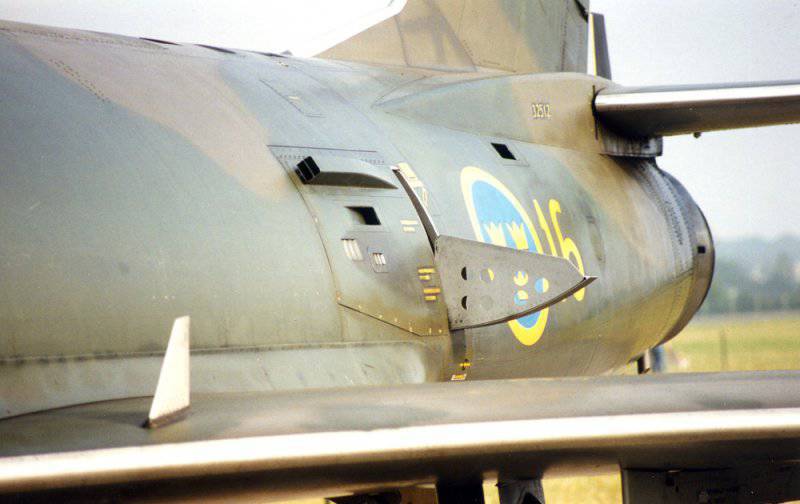
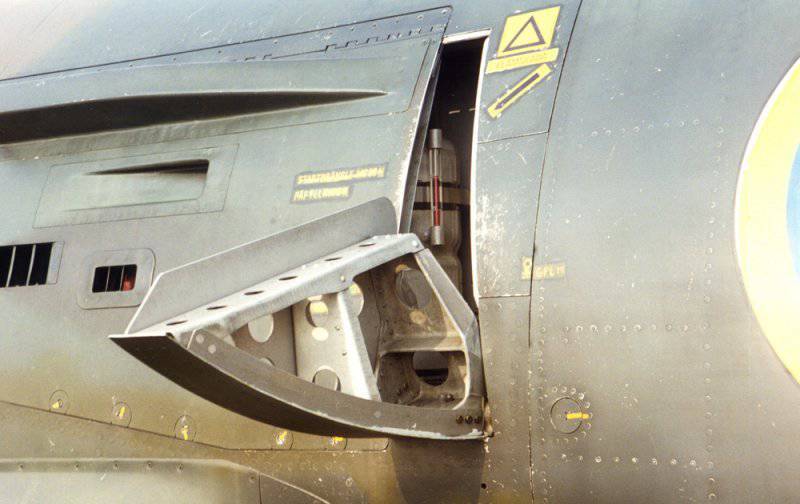
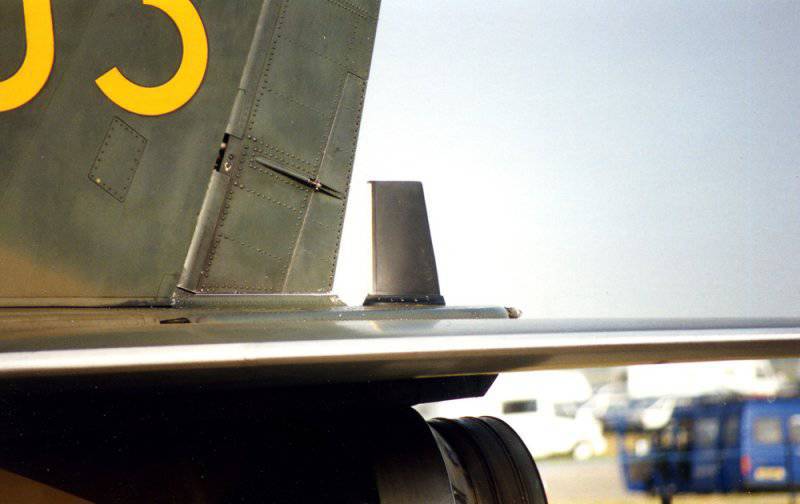
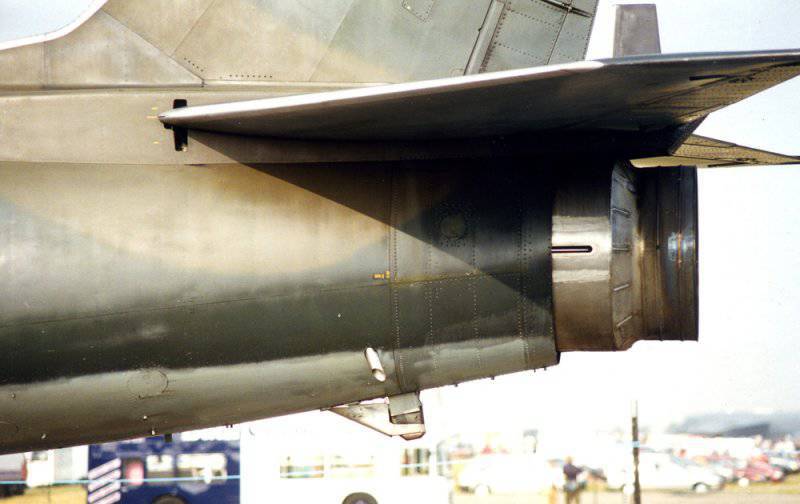
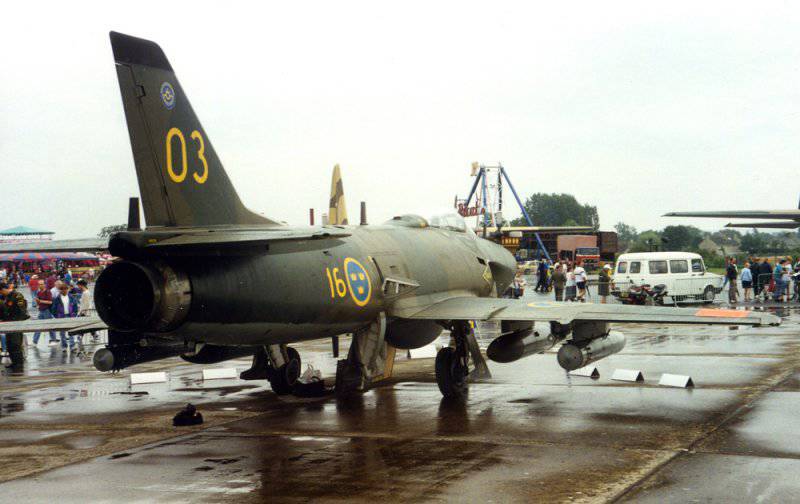
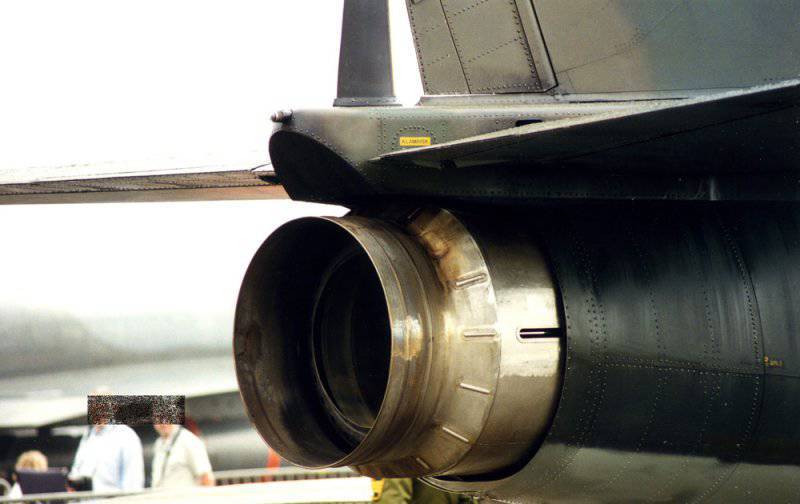
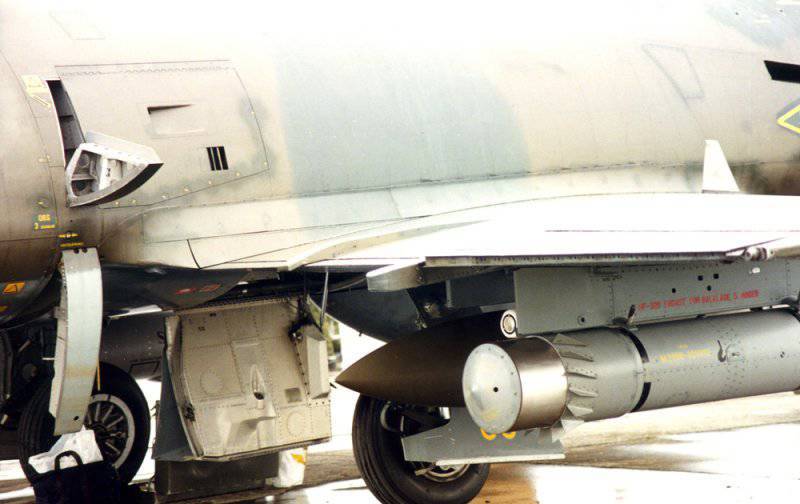
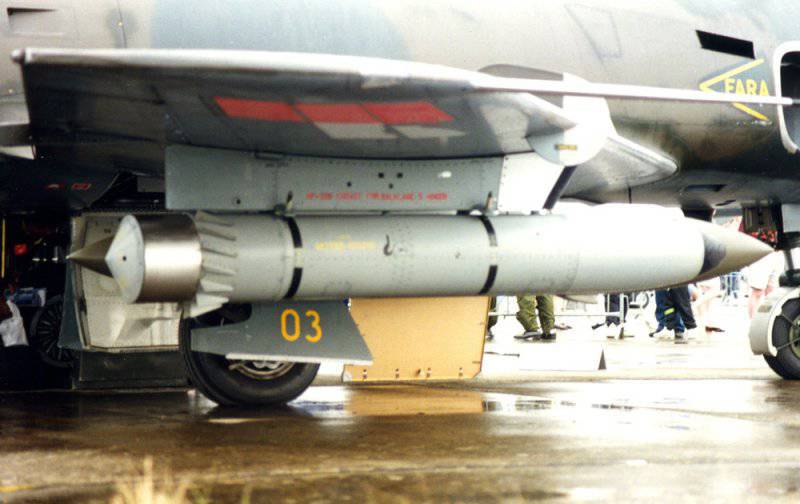
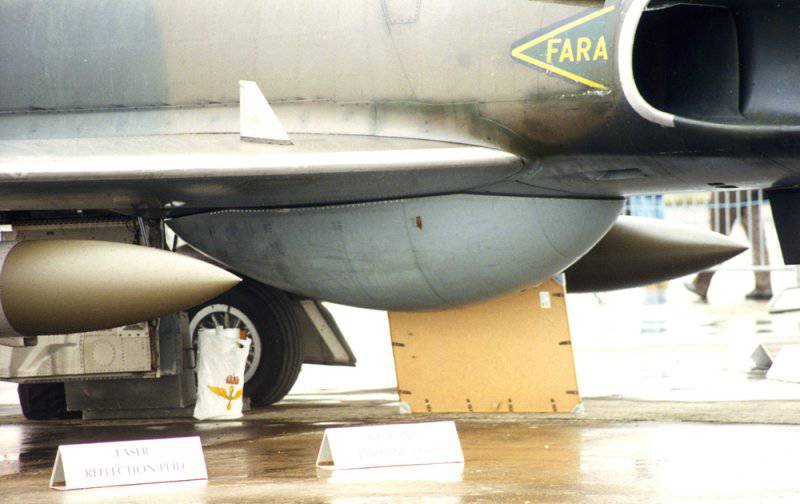
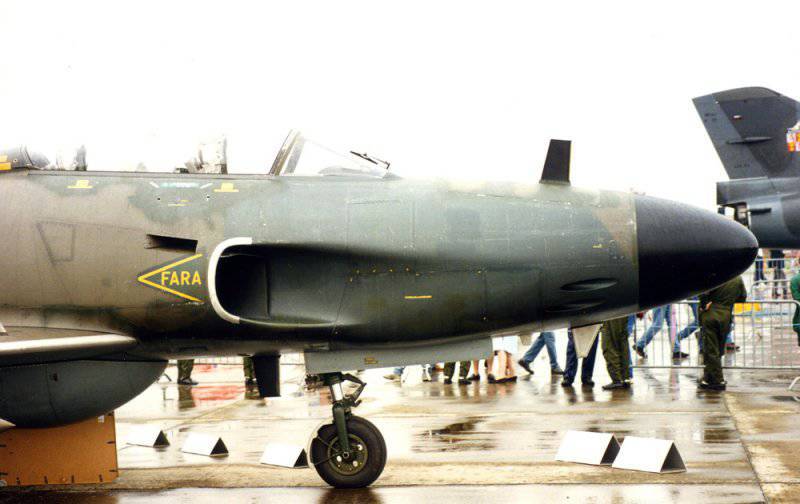
Information